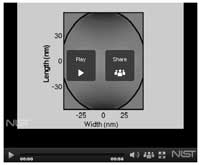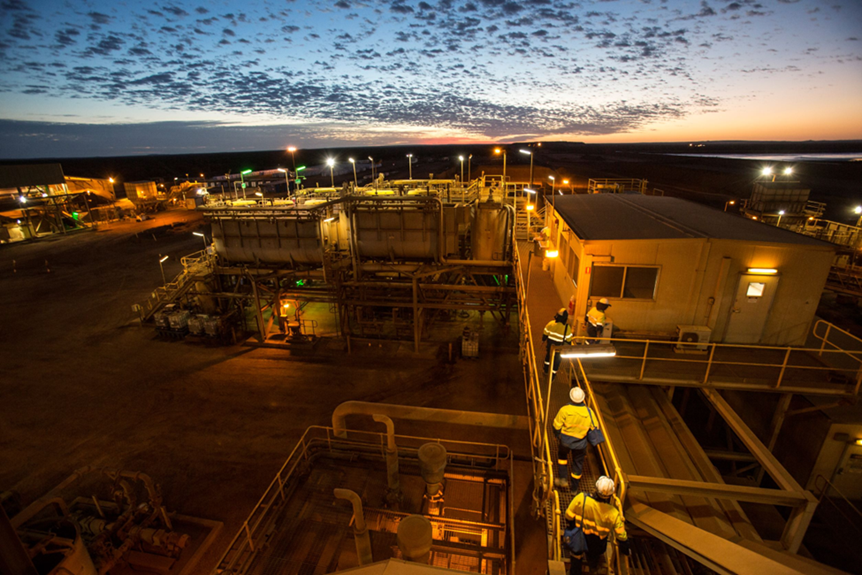By Dr. Nimitkumar Sheth, Applications Technology Manager – Molycorp Magnequench
Heavy rare earths have been most affected by the escalation of rare earth prices. This has driven motor manufacturers to look for lower cost alternatives that avoid heavy rare earths, especially Dysprosium (Dy) and Terbium (Tb). In sintered NdFeB magnets, Dy or Tb is often added to replace Neodymium (Nd) to preserve the magnetic performance of the magnet at elevated temperature. Due to the scarcity and high demand of these heavy rare earths, Dy and Tb have been facing high price volatility which has lead to a concerted effort by manufacturers to design new applications around Dy and Tb free alloys.
The MQ2 Solution
Hot pressed nanocrystalline NdFeB magnets (MQ2) provide improved temperature stability without costly heavy rare earths like Terbium and Dysprosium as shown in Figure 2. Produced by a net shape manufacturing technique, limiting the waste and environmental impact, MQ2 magnet is an effective low cost solution for higher flux applications. With its energy product of 14 to 16 MGOe and high temperature stability, MQ2 material is suitable for use in applications like traction motors and air-conditioner compressors.
Explanation for MQ2: The Grain Size Advantage
Other than heavy rare earth substitution, the intrinsic coercivity of a magnet is strongly influenced by its internal microstructure. Reducing the grain size increases the Hci and thermal stability of a magnet. This is due to the movement of magnetic domains being impeded by a denser network of grain boundaries and also due to individual domains being isolated within single grains if the grains are fine enough. This relationship between grain size and sintered NdFeB magnet Hci has been illustrated by Sagawa and Hono in Figure 3.
MQ2 has the smallest grain size of any fully dense rare earth magnet. Figure 4 illustrates this feature, showing MQ2 with a grain size in the order of 80 nm, and a typical sintered NdFeB magnet with grains between 5 to 10 µm.
Despite the relatively low remanence of MQ2 magnets in comparison to anisotropic MQ3 and sintered NdFeB magnets (Figure 5), its nano-scale grain structure gives MQ2 the highest Hci and the best possible temperature stability achievable in NdFeB magnets without using dysprosium. Figure 6 compares the flux aging loss for the three types of magnet. These Pc=0.5, 1.0 and 2.0 magnets were held at temperature between 50°C and 175°C for 1 hour, and the irreversible flux loss was measured. Figure 6 also indicates that the Dy-free sintered NdFeB magnet is not suitable to be operated above 80°C (Pc=2), while the Dy-free MQ2 exhibits extremely low flux aging loss and is able to operate up to and beyond 175°C.
The benefits of using MQ2 can be further illustrated by comparing such magnets with sintered NdFeB samples in a simple motor case study.

Motor Design Case Study
Benchmarking of the Motor – A commercially available four pole PMDC motor has been benchmarked and redesigned using an MQ2-14-150 grade. The benchmarked motor was originally designed with a sintered NdFeB magnet. Various performance parameters like back-emf, cogging torque, mid-airgap flux (solid rotor core), torque-speed, torque-current, torque-efficiency and torque-output power have been measured. Figure 7 shows the test set-up for the dynamometer loading test, closed circuit mid airgap flux scan and cogging torque measurement.
After the performance assessment, this motor was dismantled and the weights of all the critical components were measured. The magnet alloy composition of the benchmark motor magnet was measured with an ICP technique. The ICP test indicated that the benchmarked motor had a 4.08 wt% Dy component. The magnetic performance of the benchmarked motor magnet was also measured with a hysteresisgraph as shown in Figure 8.
Redesign of the Motor Using MQ2 Magnet – A virtual redesign was completed using the commercially available motor design software SPEED and finite element software OPERA.
The design target was to achieve a similar motor performance to the benchmarked motor. The air-gap of the redesigned motor was kept the same as that of the benchmarked motor to avoid any undue advantage to the redesigned MQ2 motor. Figure 9 shows the benchmarked and redesigned motor performances, and they are in close agreement.
 Table 1 shows a comparison of the motor dimensions and weight of the key components. The motor size and weight of the redesigned motor is only 10 percent more than the benchmarked motor despite the sintered magnet having a higher room temperature Br or (BH)max and 4.14 wt% Dy. This is possible due to the straight-line second quadrant operating characteristics of the MQ2 even at higher temperature.
Table 1 shows a comparison of the motor dimensions and weight of the key components. The motor size and weight of the redesigned motor is only 10 percent more than the benchmarked motor despite the sintered magnet having a higher room temperature Br or (BH)max and 4.14 wt% Dy. This is possible due to the straight-line second quadrant operating characteristics of the MQ2 even at higher temperature.
Figure 10 shows the relative dimensions of the benchmarked and redesigned motors while Figure 11 shows the comparison of the key physical parameters and cost of critical components. It can be observed from Figure 11 that the cost of the redesigned motor is 15 percent lower based on the overall material costs. The cost savings estimated in Figure 11 are the result of using an MQ2 magnet with 0 percent Dy instead of the original sintered NdFeB magnet with 4.14 percent.
REFERENCES
[1] W.F.Li, T.Ohkubo, K.Hono, M.Sagawa “The origin of coercivity decrease in fine grained Nd–Fe–B sintered magnets.” Journal of Magnetism and Magnetic Materials 321 (2009) 1100–1105
 About the Author
About the Author
Dr. Nimitkumar Sheth is Manager, Applications Technology for Molycorp Magnequench. Dr. Nimit Sheth received B. E. (Electrical Engineering) from the Gujarat University, Ahmedabad, India in 1996, M. Tech. (Power Electronics, Electrical Machines and Drives) and PhD in Electrical Engineering from the Indian Institute of Technology Delhi, New Delhi, India in 2002 and 2008 respectively. From 1997 to 2007 he worked at various positions with Industry and academics in India. Since December 2007 he is working as a Manager and leading the applications team at Molycorp Magnequench Inc, Singapore Technology Center. He has published more than 35 papers in International Journals and Conference proceedings in the area of the electrical machine design and control. His fields of interest include design and analysis of permanent magnet and switched reluctance motors, design of magnetic fixtures, finite element analysis and CAD of electrical machines and other electromagnetic devices.
Reprinted from the Spring 2013 Issue of Magnetics Business & Technology





